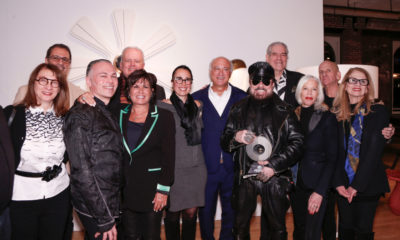Everyone in retail is selling ideas – even the store associate fluffing up a sweater display. But what do you do when that can’t-miss idea you know customers will love is resisted because of classic, fearing-the-unknown, risk-averse behavior? How do you make buyers of ideas more comfortable?
First, “Think your ideas through and take away the variables,” says Bruce Edwards, vp of Fame, a Minneapolis retail branding agency. “An idea should feel risky only because it’s something they’ve never done – not because it’s not well-planned or well-designed.”
That will help you establish trust with the client. Mike Donabauer, vp, global marketing and planning, at Wolverine Footwear Group (Rockford, Mich.), says, “If I don’t have trust, the idea’s just not relevant. Do they have the appropriate experience? Do they understand my business?” Here are some practical tips for selling creative ideas.
Tell a story. The retail design industry is so visually oriented it often overlooks words as a selling tool. “If I have to explain your ideas to someone else, what are the words I’d use?” asks Donabauer. A story illuminates associations not visible on first impression. At Whole-Brained Creative (Granville, Ohio), we write a “brand story” in the brand’s tone of voice to detail a mental picture of the idea. Of course, that requires identifying – and capturing – the appropriate tone of voice.
Share what inspires you. When retail design firm Chute Gerdeman (Columbus, Ohio) designed Club Libby Lu, it first went shopping with a group of young girls, then gave them crayons and markers and had them design the “coolest, most awesomest store in the universe.” Chute based its floor plans on those ideas, which made for a convincing presentation. Similarly, when it was asked to incorporate the M&M characters into the M&M’s World flagship store, Chute Gerdeman first created an apartment for the characters. Brian Shafley, the firm’s president, decided the characters preferred real-life, modern furniture that looked like them, such as the classic marshmallow sofa. The apartment concept, too merchandise-specific to be practical, still inspired fixtures, furniture and finishes.
Advertisement
Have a brilliant strategy. Store design doesn’t just bring the brand to life. It also articulates the strategy. So nail the strategy first. Dan Stanek, executive vp, TNS Retail Forward (Columbus, Ohio), says, “Management has to buy into the strategy before it can even think about the design. Strategy is the tool for measuring whether it’s a good design.”
From the client perspective, Wolverine’s Donabauer says, “I might be really excited about an idea, but I have to know how it relates to the existing brand position.”
Bevan Bloemendaal, senior director, global creative services, for The Timberland Co. (Stratham, N.H.), says, “The brand strategies are not only utilized for the creative process but also for design rationale and presentation purposes. Without this process, a dangerous thing happens: Personal bias and subjectivity creep in, which will derail a project in an instant.”
Make it big. Retail is life-sized and your presentations should be, too. For an apparel retailer, Whole-Brained once filled the presentation room with oversized concept sketches on rolls of kraft paper, enveloping the client in the team’s ideas. Use sketches, drawings, collages, props, video clips – whatever it takes to help the client see what you see.
Tactile stuff is huge. Let your clients get their hands on the merchandise. “Everybody now does PowerPoint,” Donabauer says. “Showing mockups and real-life applications, instead of just a design on a piece of paper, makes a creative presentation more effective.” Fame’s Edwards prefers large boards over PowerPoint. “They have presence,” he says. “When you illustrate the work electronically, it goes away right after you show it.”
Don’t keep secrets. The days of “ta-da!” are over. This is the age of collaboration. Share themes or concept treatments early in the process and offer a preview. “I find it incredibly helpful when the overall process fosters a collaborative partnership,” Timberland’s Bloemendaal says. “This can include visual stimuli meetings, rough sketch sessions and previews.”
Advertisement
Present along a safe-to-risky continuum. Show your most “out-there” ideas, but don’t make every solution outrageous. Lee Peterson, vp, brand and creative services, for WD Partners (Dublin, Ohio), says, “There’s always choice, along a line from evolution to revolution. You stay within the framework of the brand, but what corner of the corral do you want to be in?” And never present anything you wouldn’t want chosen. Nothing cheapens your work like having to implement a “throwaway” idea.
Present with passion. This is the most important point of all. Good creative work is fired with passion and it should be presented that way. WD’s Peterson likens presenting creative to playing the role of a lead singer: “You’re providing energy, a melodic spirit over everything.”
Laura Sommers is co-founder of Whole-Brained Creative, a retail design and branding firm based in Granville, Ohio.
Got an idea for a Creative Kickstart column? Send it to anne.dinardo@stmediagroup.com.
©2008 JUPITERIMAGES, Darien, Conn


 Photo Gallery7 days ago
Photo Gallery7 days ago
 Headlines6 days ago
Headlines6 days ago
 Headlines1 week ago
Headlines1 week ago
 Headlines2 weeks ago
Headlines2 weeks ago
 Headlines1 week ago
Headlines1 week ago
 Designer Dozen2 weeks ago
Designer Dozen2 weeks ago
 Special Reports2 weeks ago
Special Reports2 weeks ago
 Designer Dozen5 days ago
Designer Dozen5 days ago















